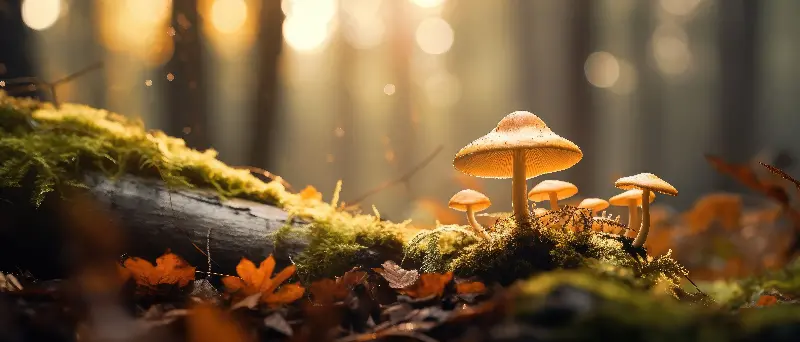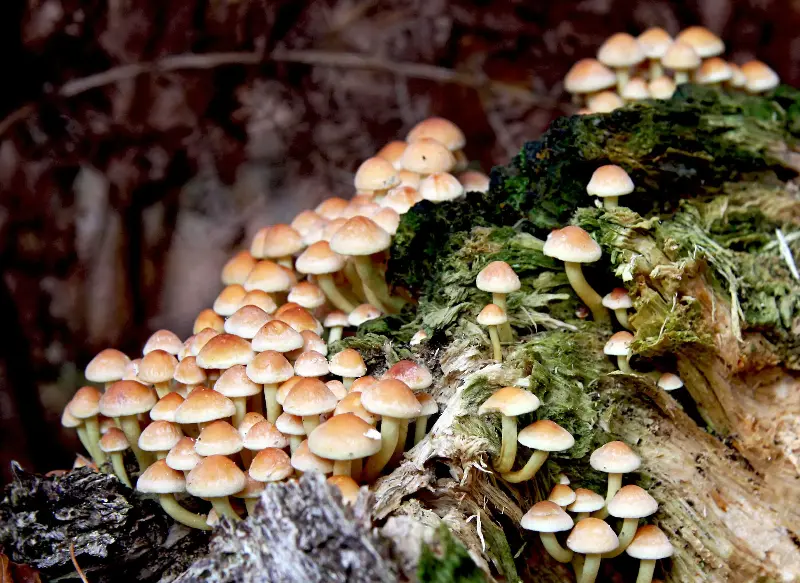Deep beneath the forest floor, above rain-soaked logs, and even in the air around us, a secret kingdom thrives. Fungi, the often-overlooked marvels at the heart of the mushroom kingdom, have quietly shaped life on our planet in ways that are only beginning to be understood. Their web of influence stretches from ancient woodlands to the hallways of our hospitals, playing leading roles in nature’s grand performance and in our own lives.

A Hidden Underground Network
It’s easy to imagine mushrooms as solitary organisms popping up after rainfall, but what meets the eye is just a fraction of the story. Most of the action happens underground, in vast networks called mycelium. Think of mycelium as nature’s own internet, connecting roots of trees, transmitting water, nutrients, and even warning signals. In one teaspoon of healthy forest soil, you can find hundreds of metres of mycelial threads.
This network doesn’t just benefit fungi; it also helps plants to thrive. Scientists now know that trees use mycelium connections—the so-called wood wide web—to exchange nutrients and communicate alarm signals about pests. Old and young trees can support each other, redistributing sugars and minerals through this fungal bridge. It’s collaboration on a scale and intricacy that seems almost magical, helping forests to recover after fires, disease, or human interference.
Fungi: The Unsung Recyclers
In the world of decomposition, fungi reign supreme. Without them, fallen leaves, branches, and even animal carcasses would stack up endlessly. By quietly breaking down organic matter, fungi return vital nutrients to the soil, making them available for future generations of plants. Some species specialise in digesting especially tough substances—wood, for instance, contains lignin, a compound so hard to break down that only a handful of fungi, called white rot fungi, can do the job. Thanks to them, forests don’t become graveyards of their own fallen timber.
Fungi also help clean up our messes. Mycologists—scientists who study fungi—have discovered species that can digest oil spills, pesticides, and even plastic, pointing to a not-so-distant future where mushrooms could help solve some of our most persistent pollution problems. This process, known as mycoremediation, is already being tested around the globe, with promising results.

Life-Saving Compounds and Culinary Delights
Many of the life-changing medicines we use today have their origins in the fungal world. The most famous example is penicillin, the world’s first true antibiotic, discovered from the Penicillium mould by Alexander Fleming in 1928. Researchers continue to find new antibiotics, immunosuppressants, and anti-cancer compounds from fungi in the wild. This hidden pharmacy reminds us that biodiversity isn’t just a curiosity, but a wellspring of tools for human health.
The culinary world also owes a debt of gratitude to the mushroom kingdom. From the umami-packed shiitake and porcini to the truffles prized by gourmet chefs, fungi offer a range of flavours and textures unlike any other. Even yeast, a humble single-celled fungus, is at the heart of bread, beer, and wine production. In recent years, researchers have developed meat alternatives using fungal mycelium, making food that’s sustainable, nutritious, and surprisingly meaty.
Mind-Altering Mysteries
Some mushrooms have not only filled plates, but also shaped cultures and rituals. Psychedelic mushrooms, containing compounds like psilocybin, have been used for millennia in religious and shamanic contexts. Today, science is catching up to tradition. Clinical trials are exploring how compounds from these fungi might help people suffering from depression, PTSD, and addiction, revealing fungi as botanical allies in mental health.
It’s a powerful reminder that fungi, with their mind-altering chemicals, have walked alongside humanity through both healing and spirituality, often sitting at the cultural crossroads of medicine, mysticism, and cuisine.
Global Diversity and Ecological Wonders
With an estimated 3.8 million species of fungi—of which only about five percent have been classified—the mushroom kingdom is staggeringly diverse. They can be found everywhere, from the icy soil of Antarctica to the steaming rainforests of the Amazon, and even inside volcanic hot springs.
Fungi form symbiotic partnerships with plants—mycorrhizal fungi, for example, enable trees to weather drought, resist disease, and expand into harsh environments. Lichens, which are partnerships between fungi and algae, grow on rocks and trees, creating the first living cover in some of the world’s most extreme places, slowly breaking down stone into soil and paving the way for other life.
Conclusion
Whether they’re weaving underground networks, recycling the dead, cooking up culinary masterpieces, or providing new medicines, fungi remain one of nature’s greatest secrets. The next time you see a mushroom pushing through the soil, imagine the hidden world beneath your feet—a kingdom that’s not just strange and beautiful, but essential for life on Earth. In the grand tapestry of ecosystems, fungi are both the silent architects and tireless guardians, sustaining worlds above and below ground in ways that are truly mind-boggling.
